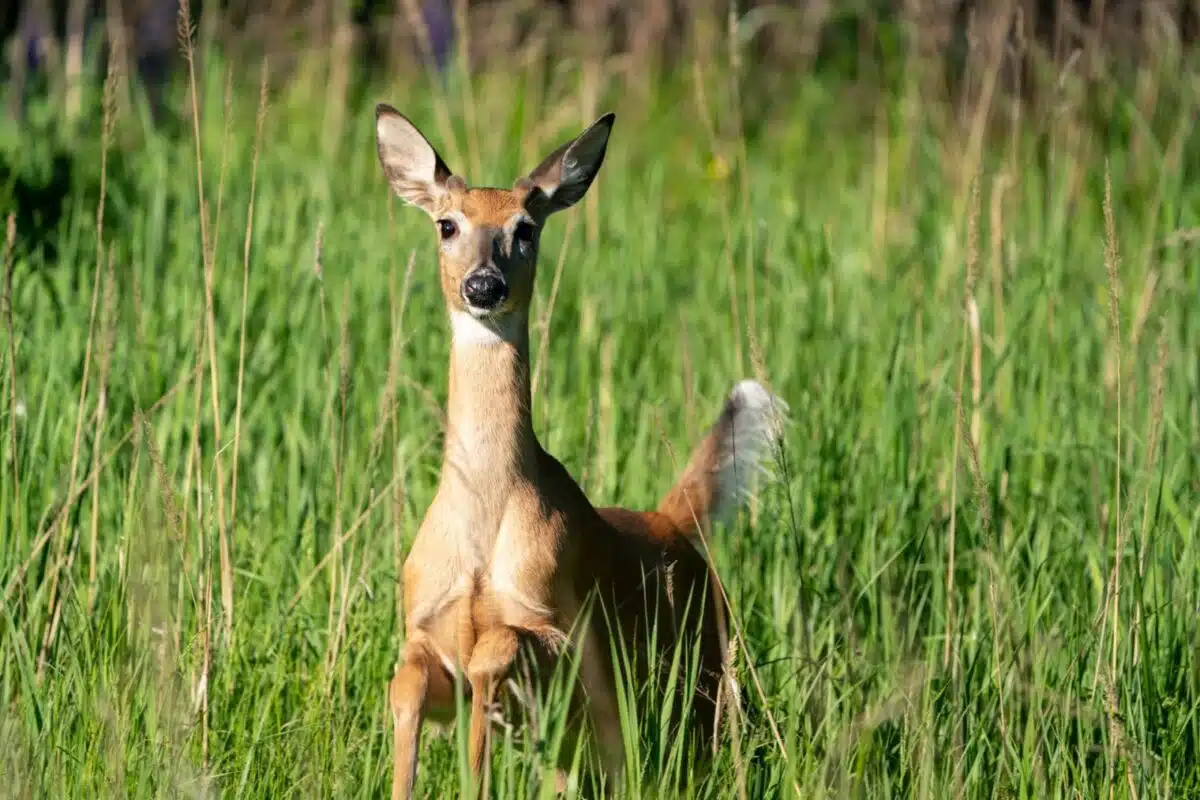Washington houses many dear animals (and deers for that matter). However, a few species of these unique animals are becoming fewer and fewer in number. Or simply put, their population has drastically decreased over a short span. Keep reading to learn more about the most endangered animals in Washington!
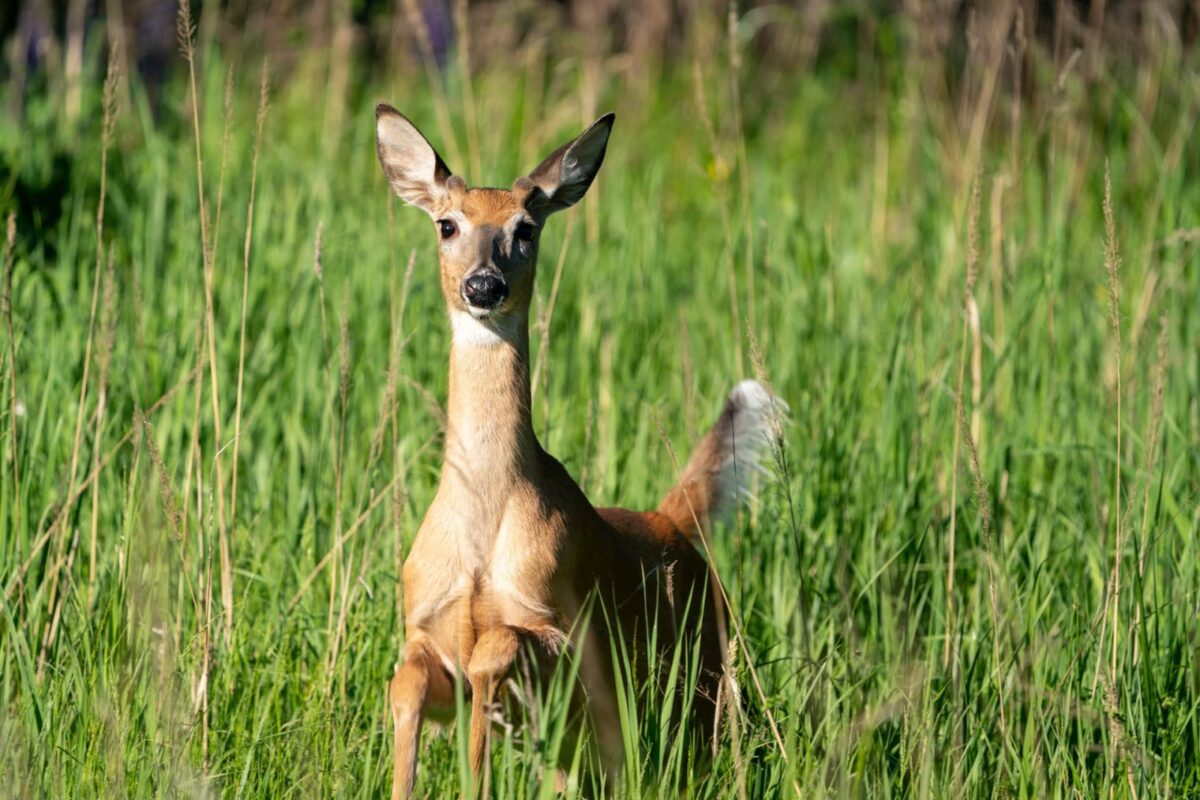
What’s more, is that the population decrease has not stopped yet. However, the wildlife administration has devised an endangered species policy. The purpose of devising this policy is to identify and protect the most endangered animals in Washington.
To proceed further with this policy, the respective administration has red-listed the names of the most endangered animals.
This paper will spotlight the 19 most endangered animals in Washington and narrate the unique particularities of these rare animal species.
#1 Humpback Whale
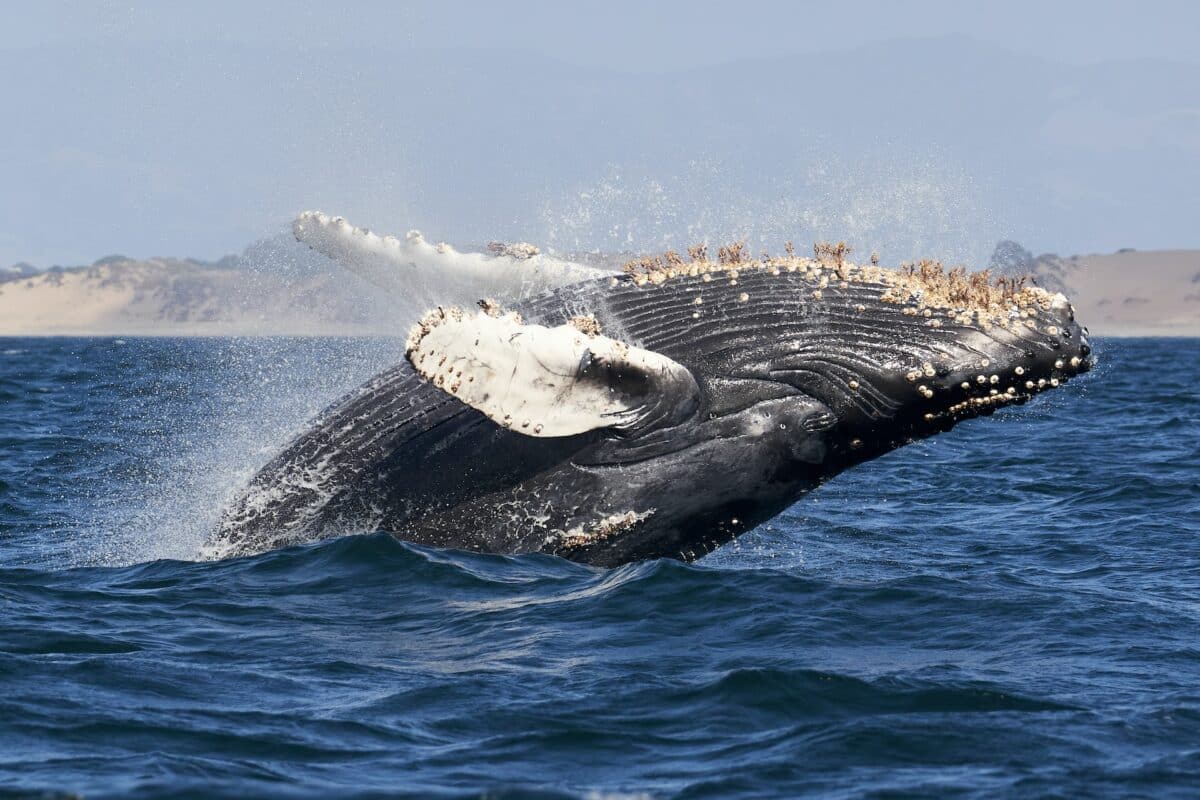
A humpback whale, aka Megaptera novaeangliae, is a baleen whale famous for its length and weight. It is 40 – 50 feet (12-16 meters) long and 40 tonnes (36 metric tonnes) in weight. The humpback whale has a black and white-colored body.
Also, it has large visible knobs on the head, jaw, and body with hair. The dorsal fin is small and points backward from the body.
An interesting fact about humpback whales is that they can moan, cry, groan, or even snore, which makes a rhythmic song.
This particular type of whale is also famous for its great acrobatic performances. But sadly, this unique type of whale is becoming extinct.
Habitat
These whales are found close to the shore. They migrate seasonally; during summer, you can find them in their polar feeding ground, and in winter, they breed in the tropical and subtropical grounds.
Nutrition
The whale feeds on shrimp-like crustaceans called krill, little fish, and plankton. It filters these out from the water by its baleen. Bubble netting is a unique feeding technique utilized by the whale.
Threat to Survival
The biggest threats to humpback whales include commercial whaling, underwater noise, pollution, ozone depletion, and whale watching. In addition, it may fall victim to entanglement in fishing gear through vessel strikes or harassment.
#2 Gray Wolf
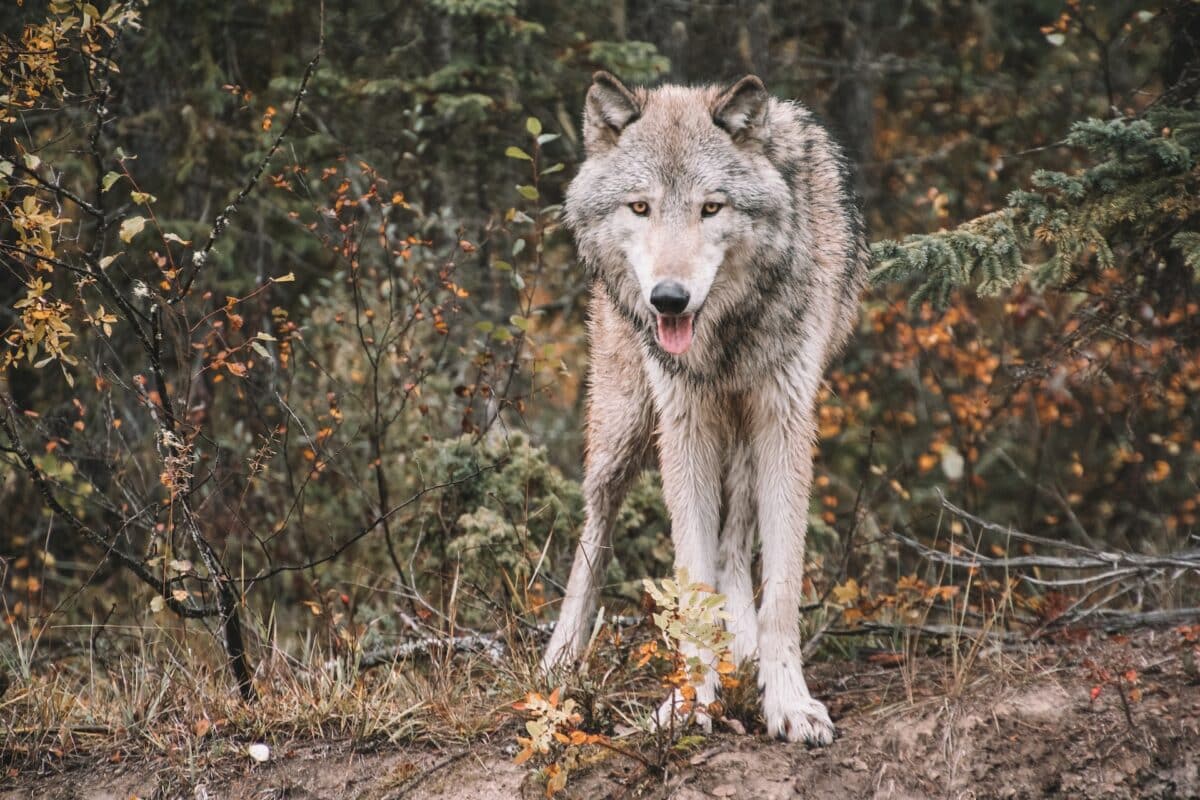
The gray wolf, also known as Canis Lupus, is a long-legged animal with large feet and a deep narrow chest.
Gray wolves are generally famous for having large canine teeth, a powerful jaw, and a keen sense of smell. Their gray color makes them different from other wolves. Overall, they are around two meters long with long bushy tails.
Notably, gray wolves live in a pack that consists of an adult breeding pair and their offspring. These wolves howl to maintain a social bond. A fun fact about his particular type of wolf is that they mark their territory with urine or feces. In addition, they can travel long distances with no difficulty.
Habitat
These wolves normally live in forests, wetlands, shrublands, rich pastures, deserts, and rocky peaks on mountainsides.
Nutrition
They hunt at night, preying on deer, elk, moose, bison, sheep, and oxen. Beavers and hares at times too.
Threat to Survival
Different sorts of diseases may threaten their survival. However, the primary cause of death is getting killed by other wolves and humans.
#3 Columbia Basin Pygmy Rabbits
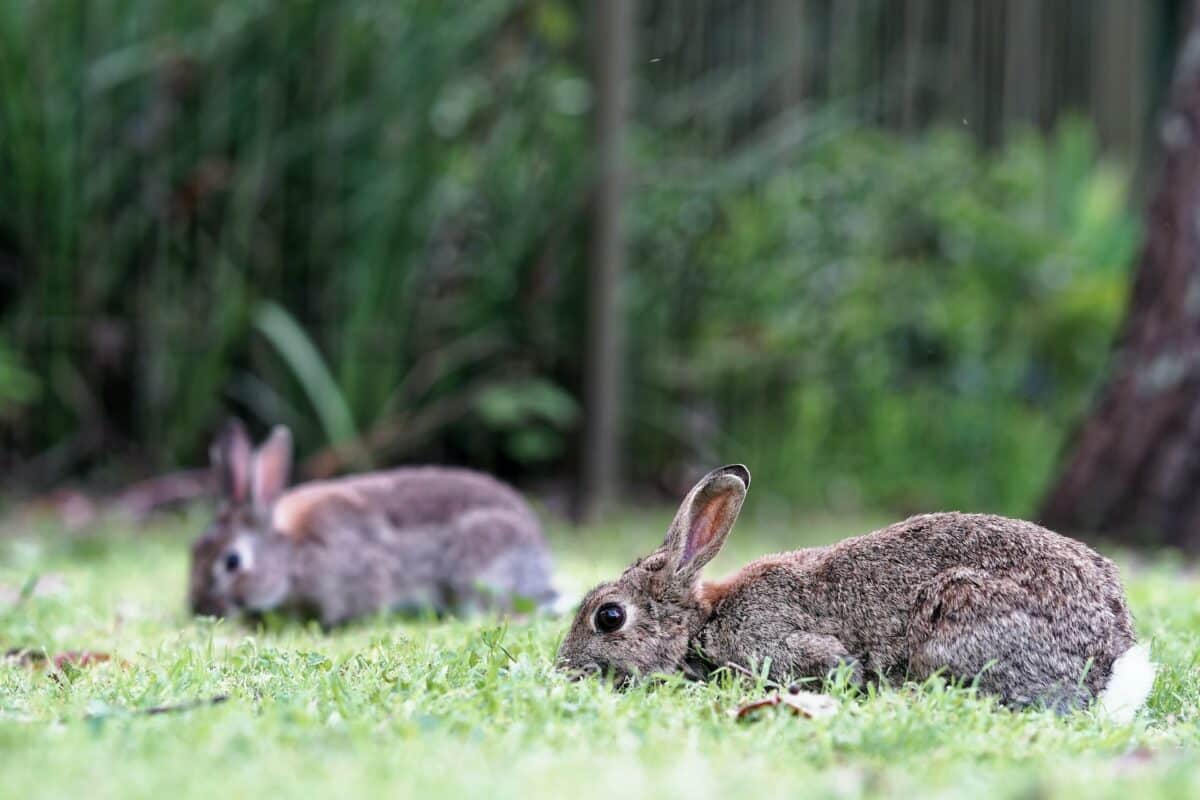
Columbia basin pygmy rabbit, also known as Brachylagus idahoensis, is a gray-colored petite rabbit with black variations on the small ears which stand tall.
This special species of rabbits has a round compact body and weighs under 1 lb. Their length typically varies from 9-11 inches. The pygmy rabbits are very nervous and quickly make a burrow to hide. Also, this small yet unique animal easily becomes stressed and scared.
Habitat
This rabbit is native to the Columbia Basin. However, they are also present in Washington.
Nutrition
The rabbit feeds on sagebrush and grass in winter, while in summer, it can feed on a wide variety of food.
Threat to Survival
The biggest threat to pygmy rabbits is predation and loss of habitat. Also, studies have pinpointed agricultural progress and wildfires as the biggest causes of their habitat loss.
#4 Leatherback Sea Turtle
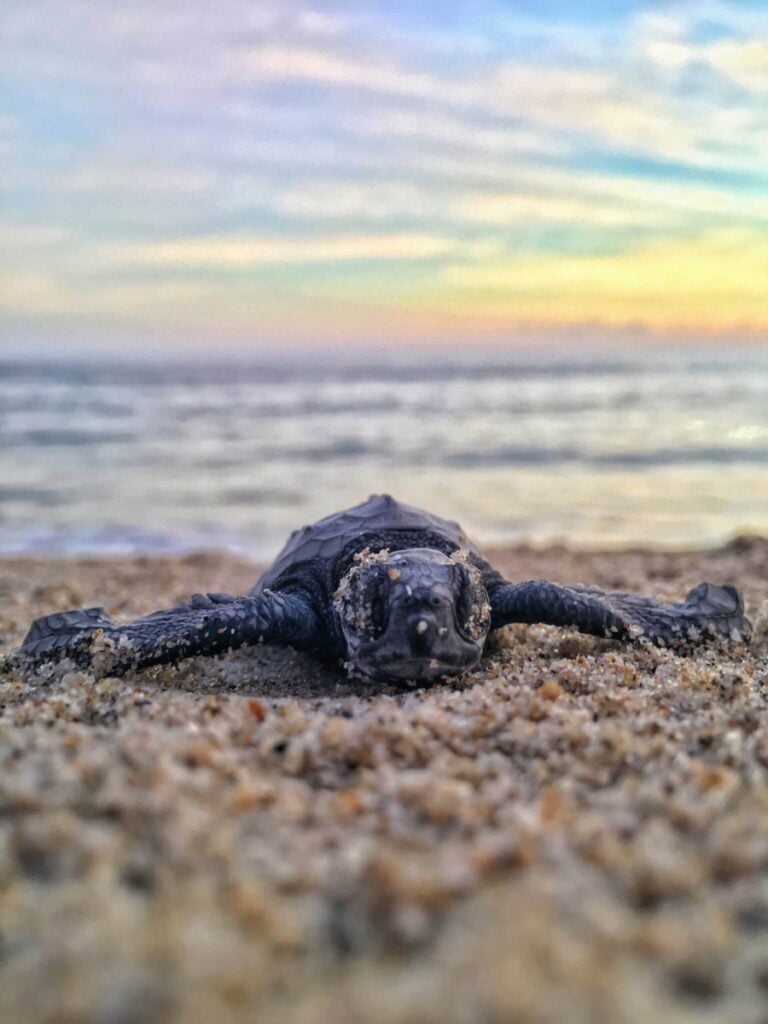
The leatherback sea turtle, Dermochelys coriacea, has a rigid body and rubbery skin with bony plates. It lacks a hard shell and is mainly seen in dark gray or black color. Interestingly, the leather sea turtle is as heavy as 220 lbs, and its length is almost 6 feet.
In addition, these sea turtles have a streamlined body that helps them swim long distances easily. That is probably why they have frequently been seen changing their nesting beaches. Plus, they can maintain their body temperature well, which is why they remain active in winter too.
Habitat
They normally prefer to live in open oceans but usually feed offshore. Typically, they can be found in North and Central America, mainly in Washington.
Nutrition
These turtles typically feed themselves on soft marine animals like jellyfish. Please note that any hard substance can harm their jaws.
Threat to Survival
The leatherback faces a threat from commercial fisheries and sea pollution. Plastic bags, which they perceive as jellyfish, are one of the biggest risks to their lives.
#5 Grizzly Bear
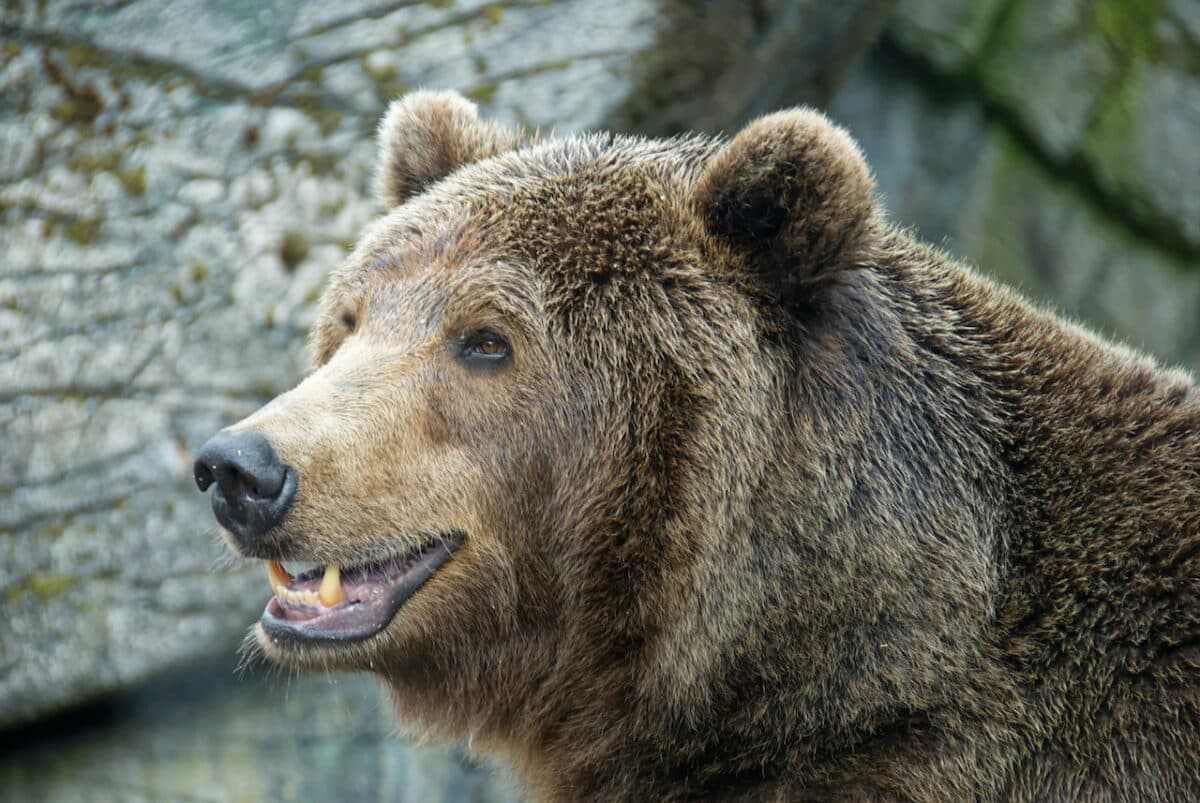
The grizzly bear, Ursus arctos horribilis, is another unique animal species present in Washington.
However, it was only added to the list of most endangered animals in Washington in 2020. The grizzly bears have brown fur with silver or pale tips. The body has humped shoulders and a high forehead.
Surprisingly, these bears don’t hibernate as others do. Grizzly bears are also known for their aggressive attitude.
Habitat
The grizzly bears live in forests and grasslands. They abide in areas of Canada, Alaska, and Washington.
Nutrition
The grizzly bears are omnivores; hence they can eat almost anything. However, they preferably feed on berries, plant roots, and shoots which they can find easily. Also, it is noteworthy that they eat small mammals and tiny fish too.
Threat to Survival
These bears face a massive threat from habitat fragmentation caused by human settlements.
However, oil and gas development, improper livestock grazing, poaching, and poorly designed timber harvest are the biggest factors contributing to their life endangerment.
#6 Columbian White-Tailed Deer
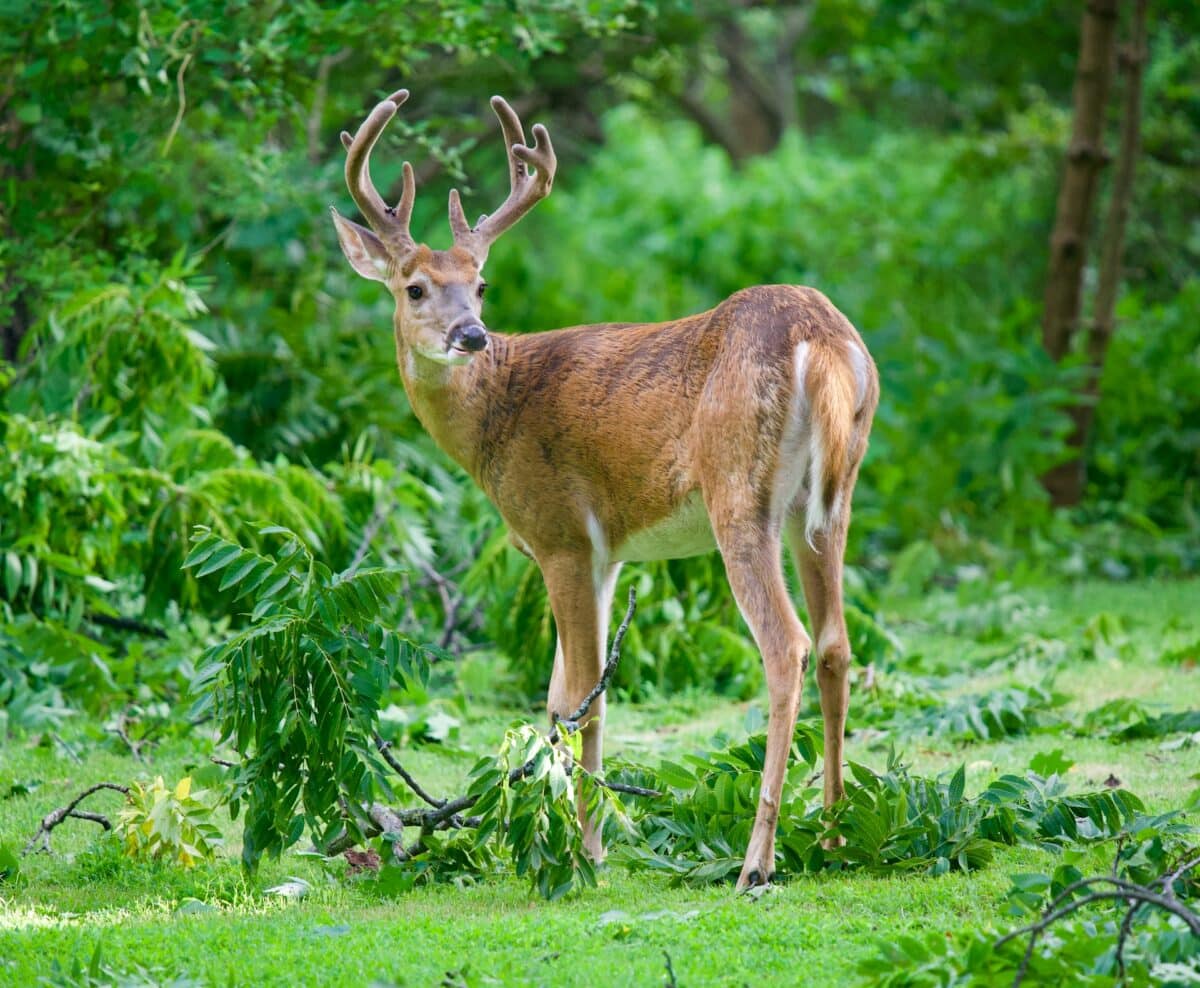
Columbian white-tailed deer, Odocoileus virginianus leucurus, is a large-sized animal with great speed. This particular type of deer is another popular animal in North America, especially in Washington City.
The Columbian white-tailed deer typically grows a pair of antlers and has white-colored skin underneath and surrounding its tail. Otherwise, these deers are reddish brown to gray. An interesting fact about these deers is that they are famous for their loud grunts. They also prefer living alone.
Habitat
Different surrounding regions of the Columbia River, like the mainland or islands, are its preferred habitats. They are more commonly present in Washington, Port Westward, and Oregon.
Nutrition
The Columbian deer mainly feed on grass. It can eat willow, cottonwood, and other types of trees on the river bank.
Threat to Survival
Agricultural developments and hunting threaten their habitat at the broadest level. It is probably because of the land reduction that eventually impacts their feeding and grazing. Subsequently, they are becoming lesser in number.
#7 Woodland Caribou
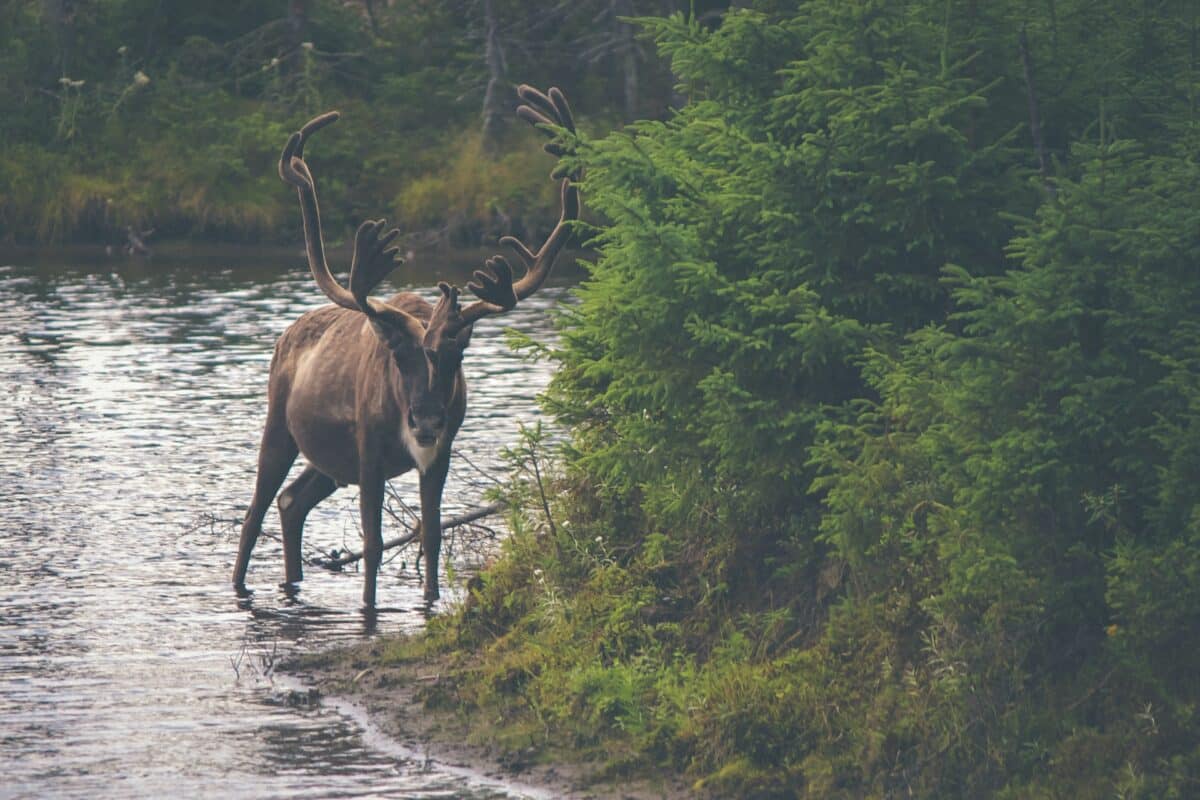
Woodland caribou, Rangifer tarandus, is dark brown with lighter patches on the neck and rump. White fur is also found on their body. Importantly, both genders of woodland caribou have velvety antlers. However, the hooves are concave and sharply edged.
Habitat
Typically, they are found in the barren lands of Washington in summer, while they move to the forest in winter.
Nutrition
These herbivores feed on lichens. The woodland caribou also eats grass, birch and willow leaves, and different types of moss.
Threat
They are threatened by deforestation and roads. Wolves and bears also kill them frequently.
#8 Short-Tailed Albatross
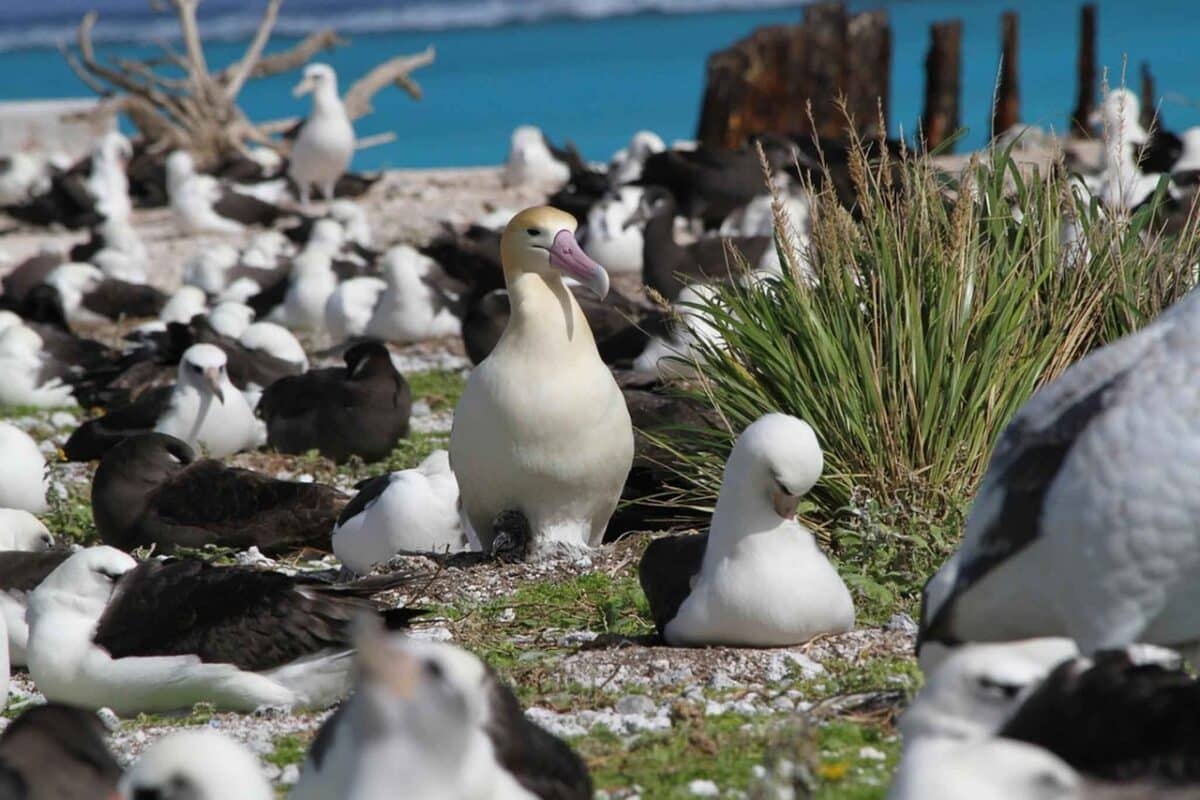
Another beautiful yet most endangered animal in Washington is the Short-Tailed Albatross, a colorful sea bird known as Phoebastria albatross. They have a white body and yellow-gold head. Also, their bill is abnormally big and pink in color.
An interesting fact about these albatrosses is that they only lay one egg each year. In addition, this breed of albatross is becoming endangered even though it has no significant predators.
Habitat
It glides over the northern Pacific Ocean and goes to the Japanese island for breeding.
Nutrition
The short-tailed albatrosses are carnivores. They feed on fish, eggs, shrimp, and squids caught from the surface of the ocean.
Threat to Survival
They aren’t hunted for their plumage anymore. Fishing, habitat loss, climate change, plastic, and other marine pollution threaten them.
#9 Sockeye Salmon
Sockeye salmon, Oncorhynchus nerka, is also known as the blueback salmon because of its white belly with a metallic green-blue top. It has silver flanks. The fish is also called red salmon, turning bright red with green heads.
Also, this unique type of fish has large spots on the fins and tail and can also develop humped backs.
Habitat
They live in the rivers of Columbia, where they can also be found in lakes and creeks.
Nutrition
The fish feeds on zooplankton in the ocean along with larval and small fish. It also eats squids.
Threat to Survival
Due to dam construction and other developments, these fish face a threat from climate change and habitat loss. The poor water quality also harms them.
#10 Killer Whale
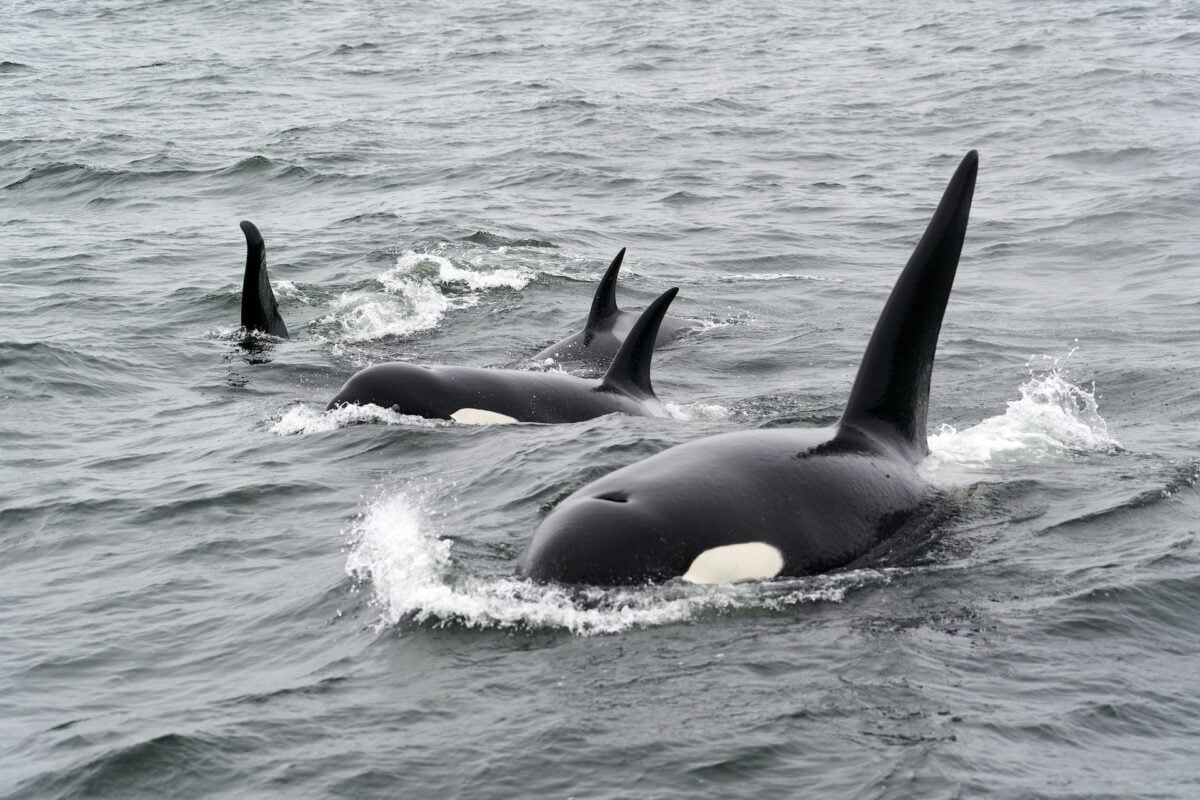
The killer whale, aka Orcinus orca, is a black and white mammal with a gray patch on the back. Their body is mainly streamlined and resembles dolphins.
Killer whales are intelligent, but unfortunately, they are on the verge of extinction. Due to their intelligence, they can perform many hunting tactics while they prey.
Habitat
They live in the inland water bodies of Washington. but are also residents of British Columbia and Oregon. Likewise, they are found in the Pacific and Atlantic Oceans.
Nutrition
It mostly feeds on chinook salmon. It can also eat other fish like mackerel, cod, and halibut.
Threat to Survival
They face food scarcity, habitat disturbances, underwater noises, and marine pollution due to chemicals and vessel harassment. These factors threaten their lives and put them on the list of the most endangered animals in Washington.
#11 Northern Spotted Owl
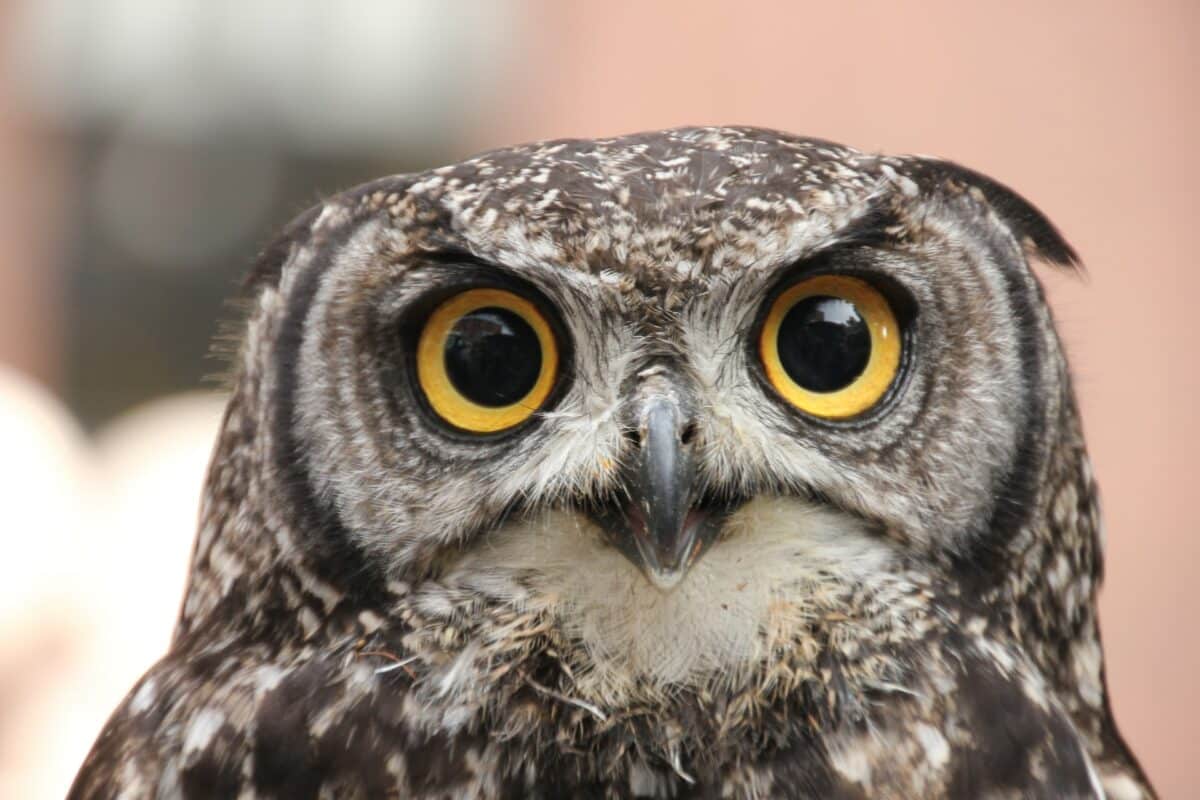
The Northern spotted owl, aka Strix occidentalis caurina, is a large owl that has been added to the list of endangered animals in the state. It is dark brown with a barred tail and white spots on its head, neck, and back. The eyes are also dark brown.
The owl lives in old forests and preys on flying squirrels.
Habitat
The owl is found in areas of the northwestern USA. These are nonmigratory and are found in Washington, where they live in the old forests of fir.
Nutrition
They eat small rodents, which include flying squirrels and wood rats. Birds, reptiles, and invertebrates are also on the menu.
Threat to Survival
Loss of habitat and food, timber harvesting, wildfires, and forest diseases threaten the lives of these owls on a larger scale.
#12 Yellow-Billed Cuckoo
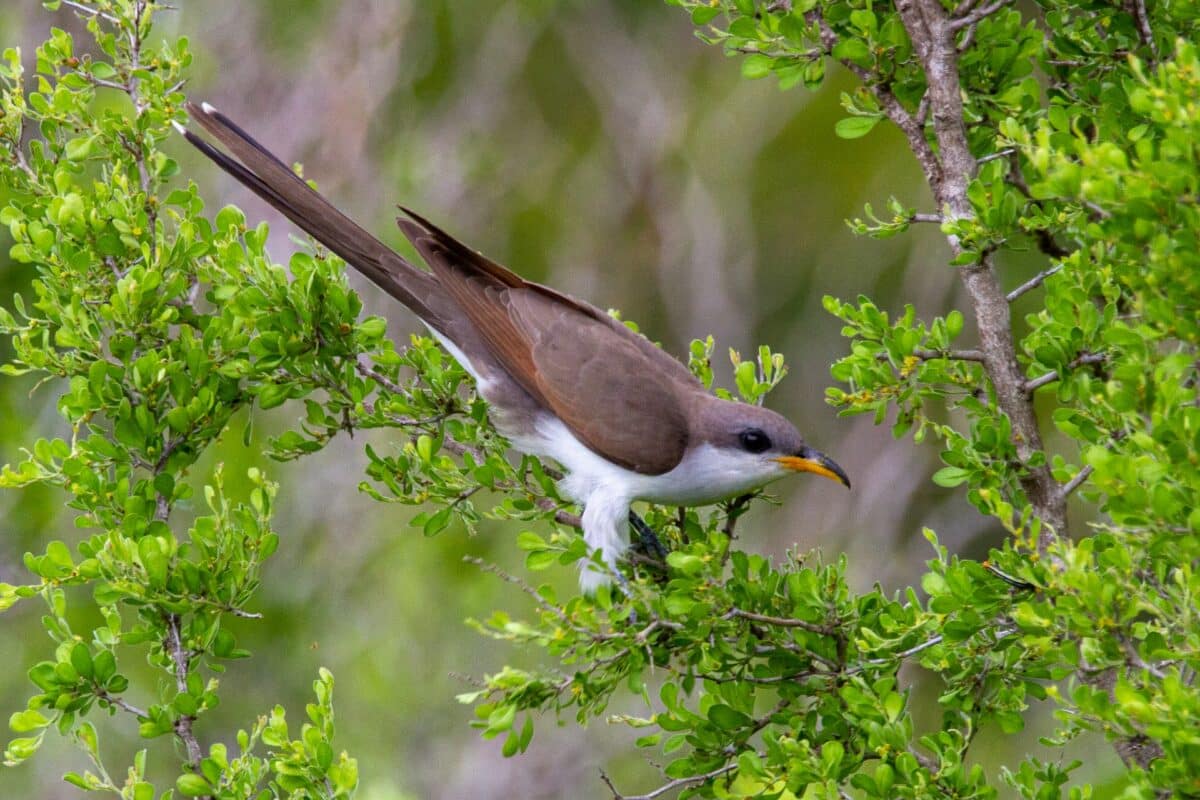
Yellow-billed cuckoo, Coccyzus americanus, is a large brown and slim bird and yet another highly endangered sea bird of Washington.
Notably, the yellow bill has a long and thick body, and the head is flat while the body is thin. It also has a long slender tail with white spots underneath and pointed wings. Interestingly, the cuckoo lays its eggs in the nest of other birds, and the owner of the nest then takes care of the offspring.
Habitat
It lives in woodlands and deciduous forests. It resides around marshes where willow groves are present. In winter, it prefers tropical forests.
Nutrition
It can eat caterpillars, cicadas, beetles, and other insects. It can also feed on berries and small reptiles.
Threat to Survival
Habitat loss is a major threat to this unique species of bird. They migrate at night; hence collisions often kill them, especially wind turbines. That’s why their population is almost on the verge of extinction.
#13 Chinook Salmon
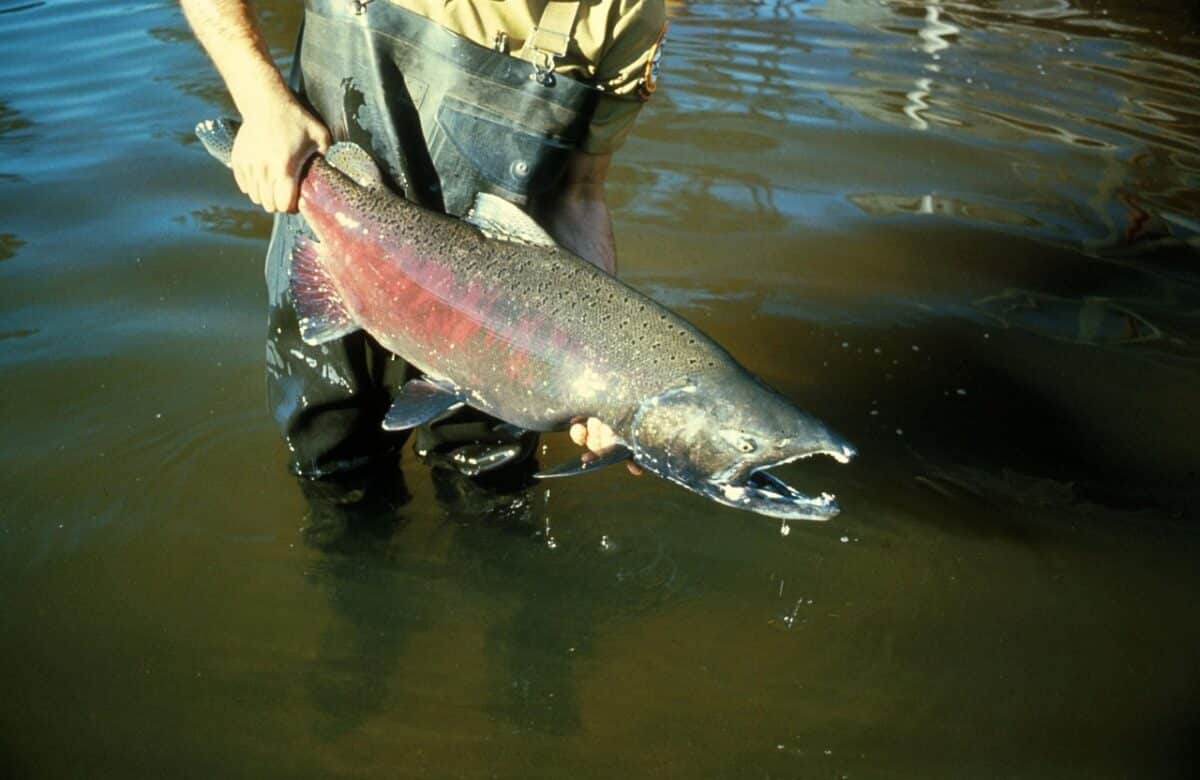
Another endangered animal in Washington is the Chinook salmon, also named Oncorhynchus tshaawytscha.
The chinook salmon has a bluish-green head, silversides, numerous irregular black spots on the fins, and a black marking around their gums. The salmon makes annual migrations to inland waters to lay eggs.
Habitat
The fish is found in the pacific ocean on the coasts of Alaska, western Canada, Oregon, and Washington.
Nutrition
The salmon feeds on insects and small crustaceans, especially amphipods.
Threat to Survival
The biggest factor contributing to their endangerment is habitat loss. Habitat loss has become a recurring element due to developmental projects like dams that impede the natural water flow and hinder migrations.
#14 Lynx
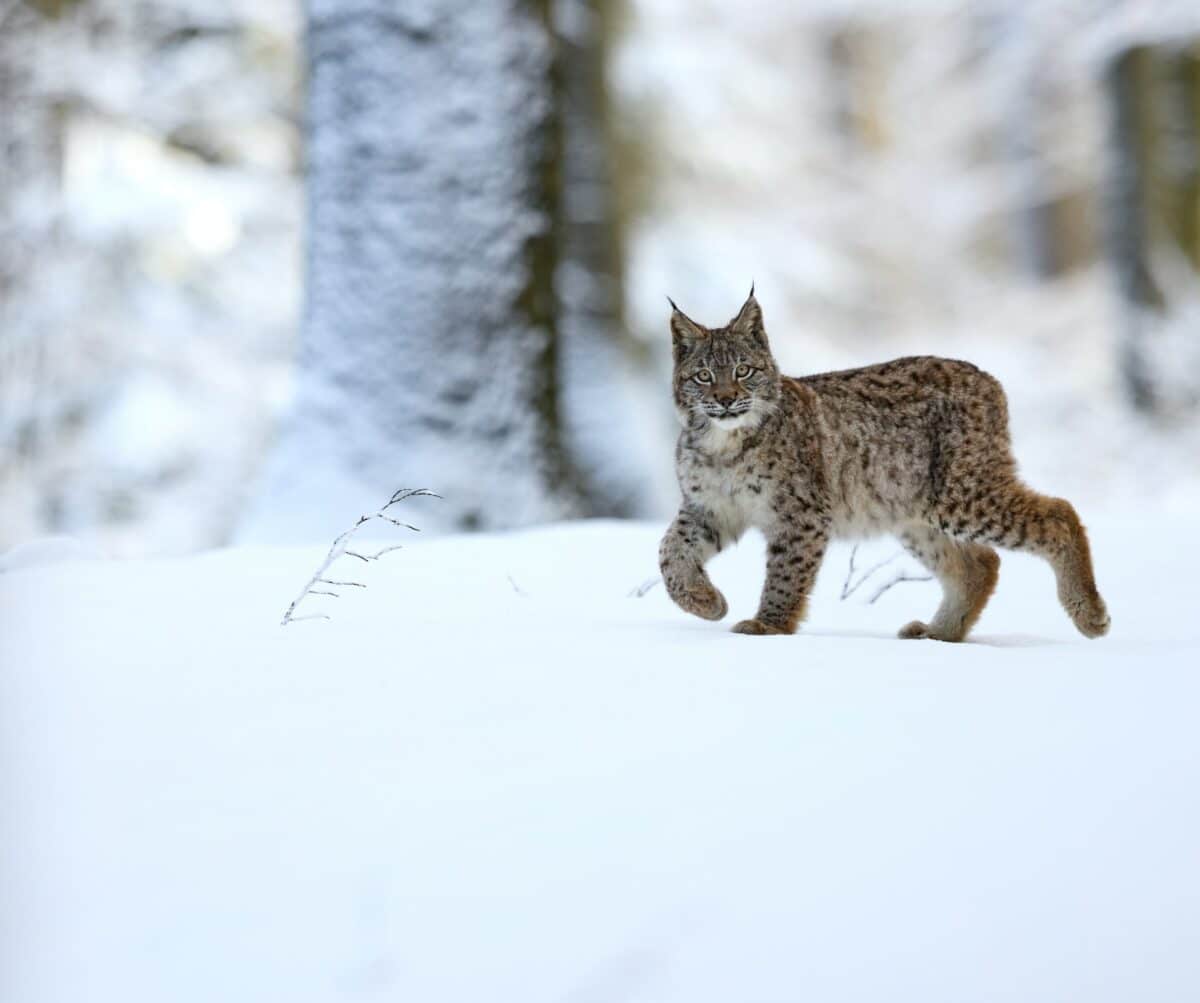
The next most endangered animal is the lynx or Lynx canadensis. It is a grizzly gray-furred bobcat-like animal with large feet and long legs. Also, it has large paws, long black ear tufts, and a black-colored tail which is comparatively shorter. Besides, it has poor eyesight and isn’t a good runner, but it can climb well.
Habitat
The lynx lives in northwest America. They can be found in fir, boreal and subalpine forests and great lake regions.
Nutrition
They feed on snowshoe hares mainly but can also eat rodents, birds, and fish.
Threat to Survival
They face a threat from vehicle collisions, habitat loss, and genetic isolation. These have all become so frequent that the respective administrations have added this animal to the list of the most endangered animals in Washington.
#15 Western Snowy Plover
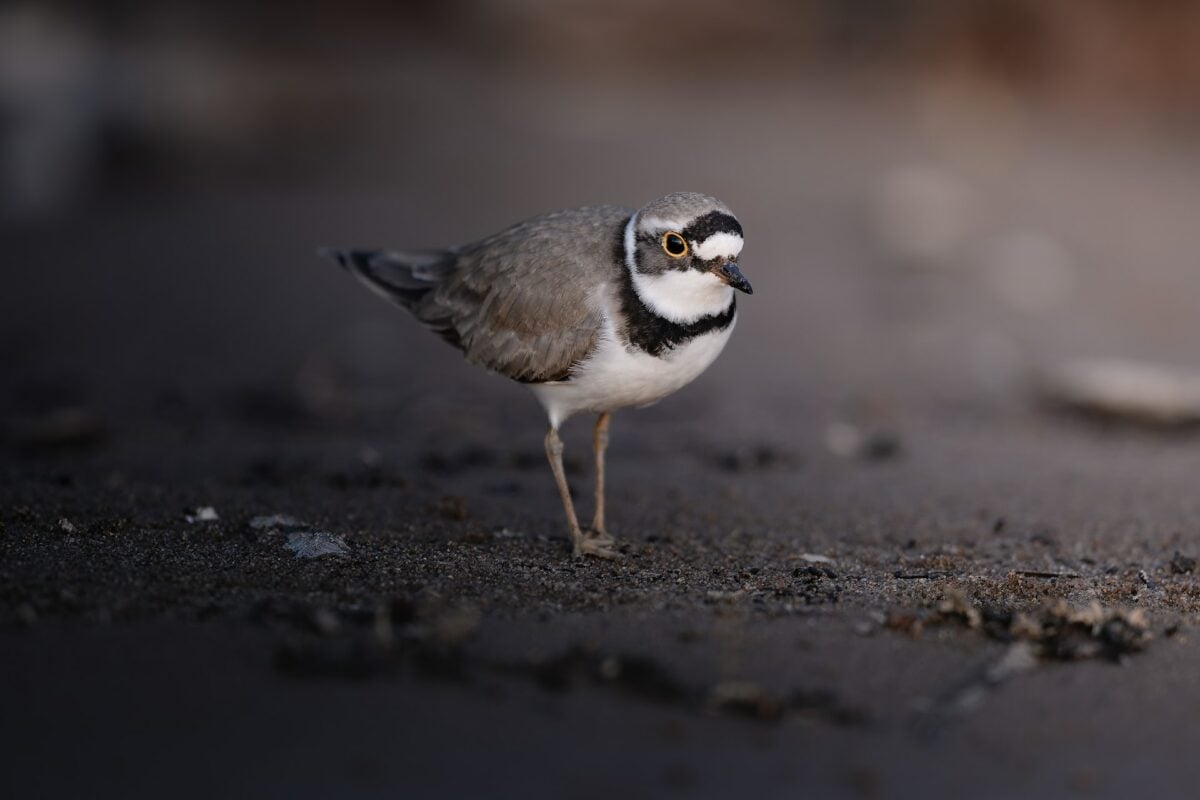
Western snowy Plover, Charadrius Alexandrinus nivosus, is a small plump shorebird with a large head and gray legs. It has a short slender bill in the color black, whereas their bodies are pale sandy-brown.
Habitat
These birds live on vegetated sandy beaches and salt flats. They can be found on Washington, Oregon, Mexico, and California coastal beaches.
Nutrition
The diet includes small crustaceans, insects, and little fish.
Threat to Survival
The birds are threatened by climate change which has led to a rise in sea levels, causing a loss of nesting habitat for the birds. Many other factors also contribute to their habitat loss.
#16 Marbled Murrelet
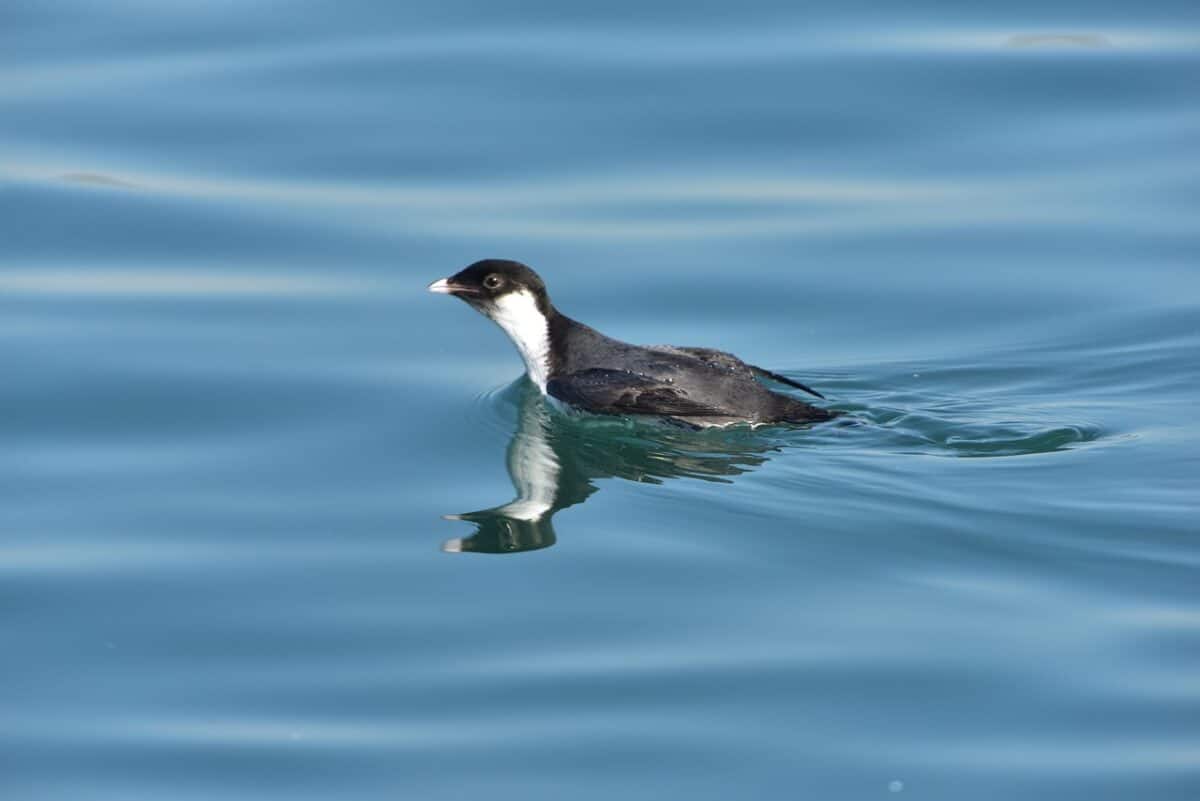
Marbled Murrelet, Brachyramphus marmoratus, is a small chubby seabird. The bird has a small neck, and their colors are dark blackish-brown with a white belly.
The bird raises its wings and makes odd sounds to call on other birds.
Habitat
The marbled murrelet lives near the shore in northwestern America. The bird can be found in the state of Washington near the ocean.
Nutrition
They feed on little fish like capelin and herring but also on crustaceans like amphipods and shrimps.
Threat to Survival
The Marbled murrelets are harmed by climate change and oil spills. Entanglement and habitat loss also threatens them to a great extent.
#17 Yelm Pocket gophers
Yelm pocket gopher, Thomomys mazama yelmensis, is a small-eyed animal with delicate whiskers and a small tail. It has long incisors with sealed lips. The animal ranges from 5 to 14 inches in length and has small ears and tails. Notably, the gopher stores food in its cheek pouches.
Habitat
The pocket gopher lives in plain regions of North America. They live in places with loose soil so that they can dig easily.
Nutrition
They eat roots, tubers, and other plants they can find above the ground. Its diet is vegetarian, and it can chew abrasive substances with ease.
Threat to Survival
These gophers face a threat of habitat loss due to urban developments and wildfires. Due to the constant increase in their habitat loss, the world may encounter the extinction of this unique species very soon.
#18 Spotted Oregon Frog
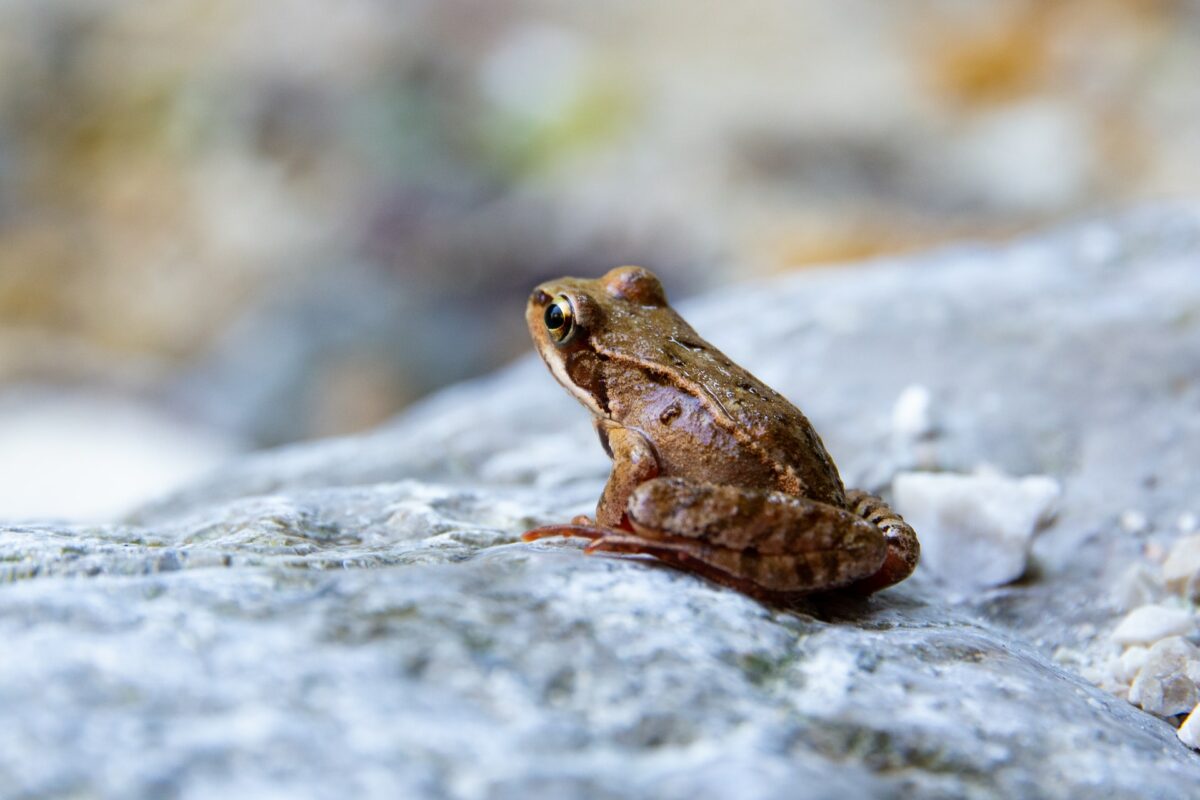
The Spotted Oregon Frog is a robust frog. It is reddish brown with variable amounts of large black spots on the back, sides, and legs. They hibernate in the mud during the winter season.
Habitat
The frog lives in the wetlands of Washington state. It breeds in shallow waters and unshaded emergent wetlands.
Nutrition
The frog feeds on invertebrates like beetles, flies, and spiders. They also feed on algae and decaying water vegetation.
Threat to Survival
The frog faces a threat from flooding, filling, and draining of water. Habitat loss has dramatically reduced its population, which is why they are being added to the list of most endangered animals in North America.
#19 Horned Streaked Lark
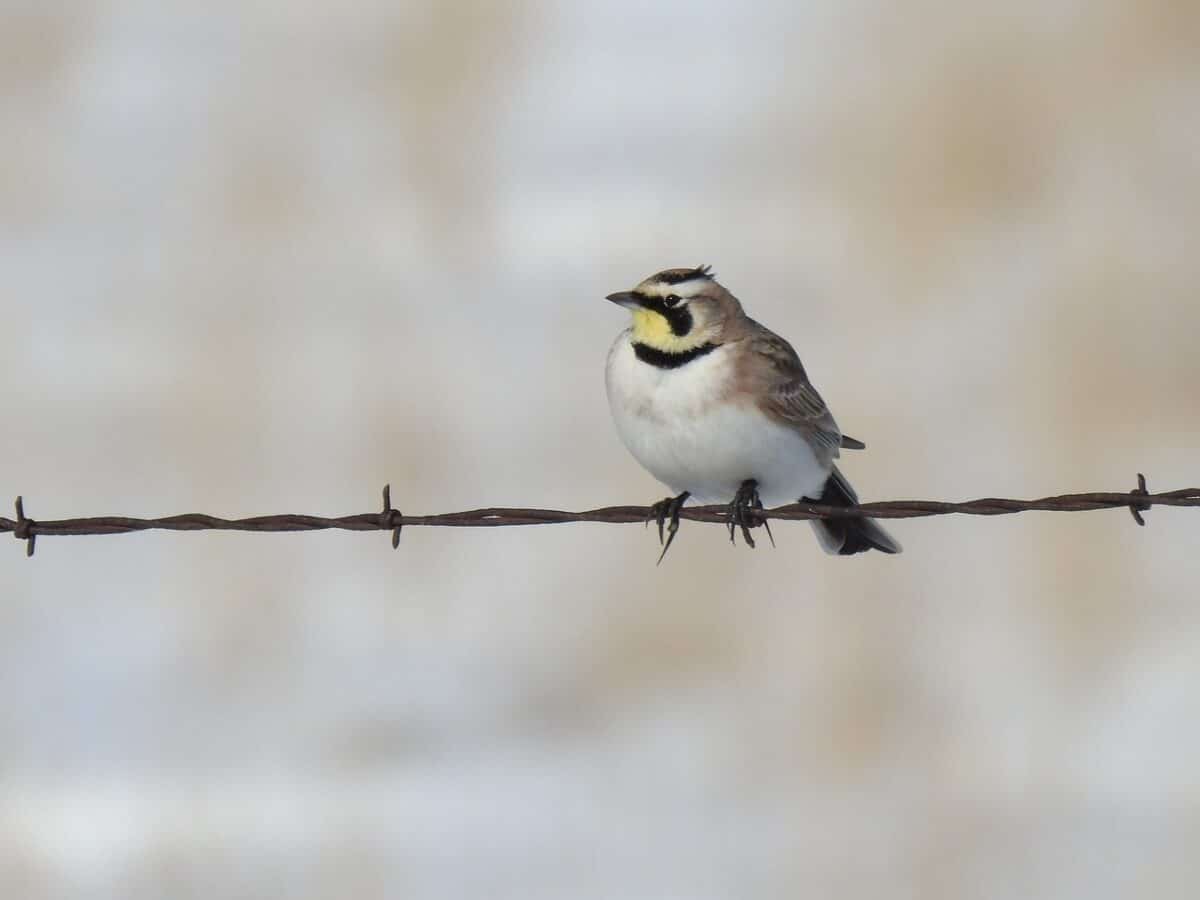
Horned Larks, Eremophila alpestris strigata, are small long-bodied birds with short, thin bills and necks holding their rounded heads. Their face and neck are yellow, and they are known as songbirds. But sadly, the population of these melodious songbirds is getting smaller and smaller.
Habitat
These birds live in prairie and open coastal lands of Washington state, which can be bare or sparsely vegetated.
Nutrition
Horned Larks feed on seeds and insects, which include beetles, grasshoppers, and caterpillars, to fulfill their protein requirement.
Threat to Survival
These birds are threatened by the mowing of fields which causes disturbances and habitat loss. Developmental projects are a major threat to larks. Due to the constant reduction in the number of larks, the wildlife administration has red-listed this rare species of larks.
The Final Word
Washington is home to many unique animals. But unluckily, this animal’s hub is turning into a zone of endangered species. We have mentioned above the details about the most endangered animals in Washington.
Also, we have briefly talked about the threats to the survival of these unique animal species. We must alleviate those threats if we want to keep these rare and unique animal species on our planet.
We hope you’ve enjoyed learning about all these dear animals! Sadly the very same trend, the decline in biodiversity, is seen in most U.S. states – read more about the Most Endangered Animals in Kansas.
Join our Forum for free today!


